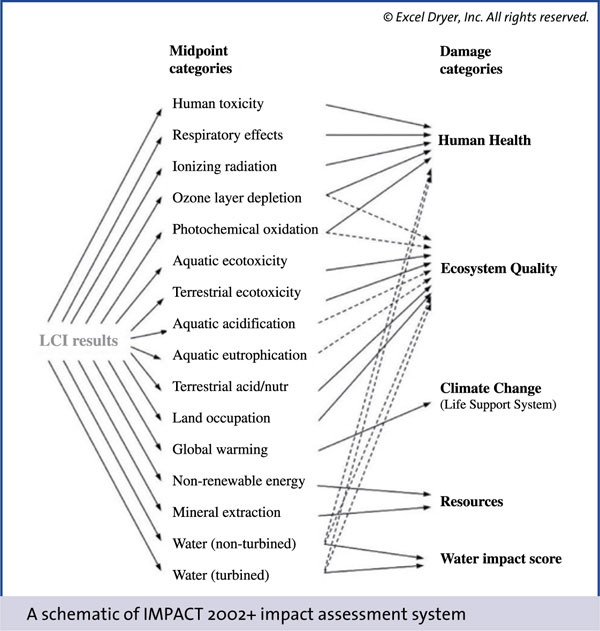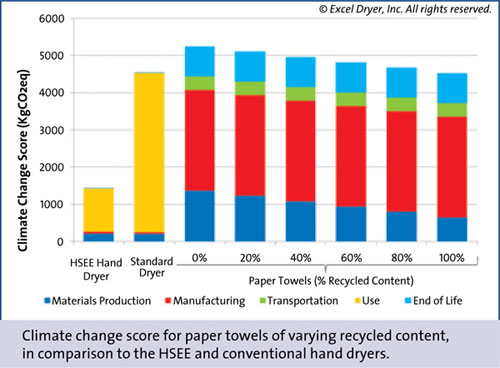Throw in the Towel: High-Speed, Energy-Efficient Hand Dryers Win Hands Down
Life Cycle Impact Assessment Method
In the hand drying LCA, five primary impact categories were selected: Climate Change Score, (Fresh) Water Use, Human Health, Ecosystem Quality, and Resource Depletion.
In the impact assessment, the LCI flows of materials, energy, and emissions into and out of each of the three hand drying systems are classified and combined based on the type of impact their use or release has on the environment using the "Impact 2002+" impact assessment methodology. Impact 2002+ was selected as the assessment approach because it represented the best available science and its ability to combine "midpoint" indicators that affect a similar "endpoint" indicator, allowing for a clearer and comprehensive communication of the outcomes.

Referring to the schematic, the Life Cycle Inventory (in the far left column) with over 1000 types of flows of energy, materials and emissions, resulting from the use of more than 50 materials and processes are distributed and condensed into the 16-Midpoint categories (in the middle column), which in turn are allocated and condensed into one or more of the 5-Endpoint or damage categories (in the right column). These five categories for environmental damage provide a comprehensive and quantitative measure of the overall environmental impact. The midpoint and inventory information can be called on, in turn, to answer specific questions about the nature of environmental impact that is being reported.










